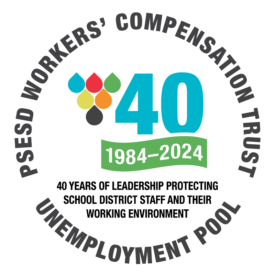There is overwhelming evidence that the likelihood of an on-the-job injury is highest in a new employee’s initial period of employment.
While there are a number of factors at play in these incidents, such as age, hazards unique to the position, and each employee’s prior knowledge and experience, there are general approaches districts can take to help newly hired employees stay safe.
When designing an approach to preventing injuries in new employees, it’s helpful to consider which factors increase their risk of injury. Statistics show that the following factors may have causal relationship to new employee injuries.
- Lack of experience. If a job requires skills that are new to the employee, it can be expected that they will be more prone to error and hazards during the learning period.
- Lack of communication. It is important that managers communicate clearly and effectively with new employees so they have the information they need and feel comfortable asking questions.
- Lack of supervision. It is management’s responsibility to make sure employees are properly trained and know the hazards of the job.
- Lack of mentoring. Pairing new employees with a skilled and experienced employee to go over the job hazards and safety best practices is a great way for the new employee to feel comfortable and allow them to be able ask questions or voice concerns.
- Lack of clear expectations. If an employee does not have an accurate sense of expectations as they transition into their new job, they may feel pressure to produce, and in an attempt to get the job done quickly, overlook potential hazards.
New Employee Safety Orientation
New employees who receive a meaningful safety orientation are more likely to be safe and productive employees. A meaningful safety orientation should include:
- District expectations;
- District’s safety rules;
- District’s safety philosophy;
- District safety contacts;
- What to do in case of an emergency; and
- What to do in case of an unsafe or hazardous situation.
Safety orientations are a good opportunity to reinforce your district’s safety culture and start new employees off on the right track.
Ongoing Education and Training
A well-educated workforce is a benefit to any organization. Education and training can take many forms. Sessions can be a quick but important 5 minutes, or as extensive as an OSHA 30-hour course.
One thing is for certain: education and training should be ongoing, whether in the form of an annual safety training session or a daily toolbox talk. We never can communicate too much about our work and the ever-changing hazards that are associated with it. This is true for new employees as well as for our more seasoned staff.
Contact PSWCT Risk Consultants for more information.




